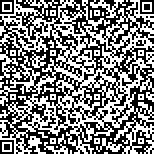下载中心
优秀审稿专家
优秀论文
相关链接
摘要

海冰是影响地球热循环的重要因素。以海冰和海水的微波热辐射为源,并通过位于海面遥感海冰的3层分层介质系统的分析,取得中间介质厚度与所接收到的辐射亮温有如下模式:TB=A+Be-CD.其中A,B,C与遥感系统的极化,使用角度和角频率有关,可以通过实际地面的海冰测试试验获得。该模式符合电磁场在有损介质中的传播特性,反映出被动微波遥感所接收到的能量与传播距离的关系。近几年来,根据该模式,使用4个频段微波辐射计在地面进行实测(入射角为0°),在飞行中使用3个频段,结果空中和地面基本符合。实践证明其模式是正确的可行的。文中给出在辽东湾测得航线上的冰厚度分布和亮度温度与冰厚度的统计曲线。最后指出影响测量并限制对厚度识别的几种因素。
Sea ice is an important element affecting heat circulation of the earth. Based on the heat emission of sea ice and sea water, the paper analyzes a 3 layer medium at sea surface used to sense sea ice and derives the following model relating intermediate medium to the received emission brightness temperature: TB=A+Be-CD where A,B and C all depend on polarization, observation angle and frequency of the remote sensing system, they can be deduced from sea ice in situ measurement on ground. The model agrees with propagation features of electromagnetic wave in loss medium and reflects the relationship between the received energy by passive microwave remote sensing system and the propagation distance. In recent years, 4 bands of microwave radiometers were used to measure sea ice on ground (0 degree observation angle) and 3 of them were used in aerial remote sensing, two results are basically in agreement. The fact shows that the model is correct and feasible. Sea ice thickness distribution along the flight line over Liudongwan Gulf and statistical curve relating brightness temperature to ice thickness are given. Several factors affecting measurement and limiting ice thickness identification are pointed out.

